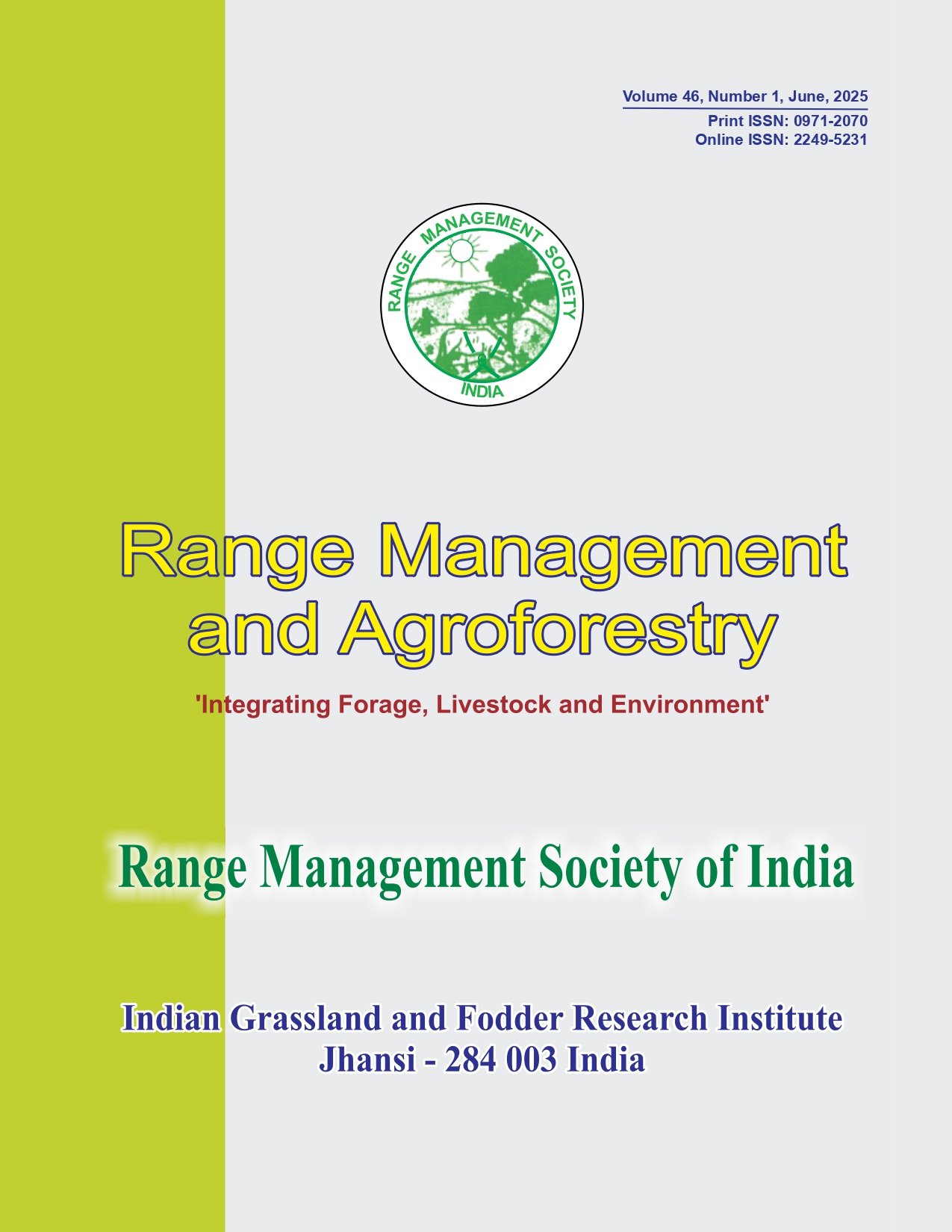Effect of agri-silvi-horticultural system on soil chemical properties and available nutrients at different depths in Haryana
Keywords:
Agri-silvi-horticulture, Available nutrients, Eucalyptus, Kinnow, Soil propertiesAbstract
The present investigation was carried out at Research Farm, Department of Forestry, CCS Haryana Agricultural University, Hisar during 2017-18 to evaluate the effect of agri-silvi-horticultural system on soil chemical properties and available nutrients at different depths. Soil samples from different tree based systems (kinnow + eucalyptus + wheat and kinnow + wheat) and control (devoid of tree) were taken at 0-15, 15-30, 30-60 and 60-90 cm depths. Soil pH and electrical conductivity reduced significantly under kinnow + eucalyptus + wheat system by 1.5% and 25%, respectively over control. The kinnow + eucalyptus + wheat system showed higher organic carbon content and available nutrients (N, P and K) than sole cropping at different depths. The highest soil organic carbon (0.40%) was observed under kinnow + eucalyptus + wheat system followed by kinnow + wheat (0.37%) and it was lowest in system without trees (0.27%). Soil organic carbon and nutrient content decreased with increase in depth irrespective of tree species. Significant increment in available nitrogen was observed under kinnow + eucalyptus + wheat system by 47.9% and under kinnow + wheat system by 33.7% over control. The available N, P, and K content was higher under kinnow + eucalyptus + wheat system (113.9, 11.5 and 225.3 kg/ha, respectively) followed by kinnow + wheat system (103.8, 10.2 and 213.0 kg/ha, respectively) over control (77.0, 8.7 and 198.6 kg/ ha, respectively). Different tree based system and depth significantly affected the DTPA extractable micronutrients (Zn, Mn, Cu and Fe) contents in soil. All chemical properties except pH and calcium carbonate were significantly correlated with each other. Hence tree based systems enhanced soil organic matter content, available nutrients and improved soil properties.




